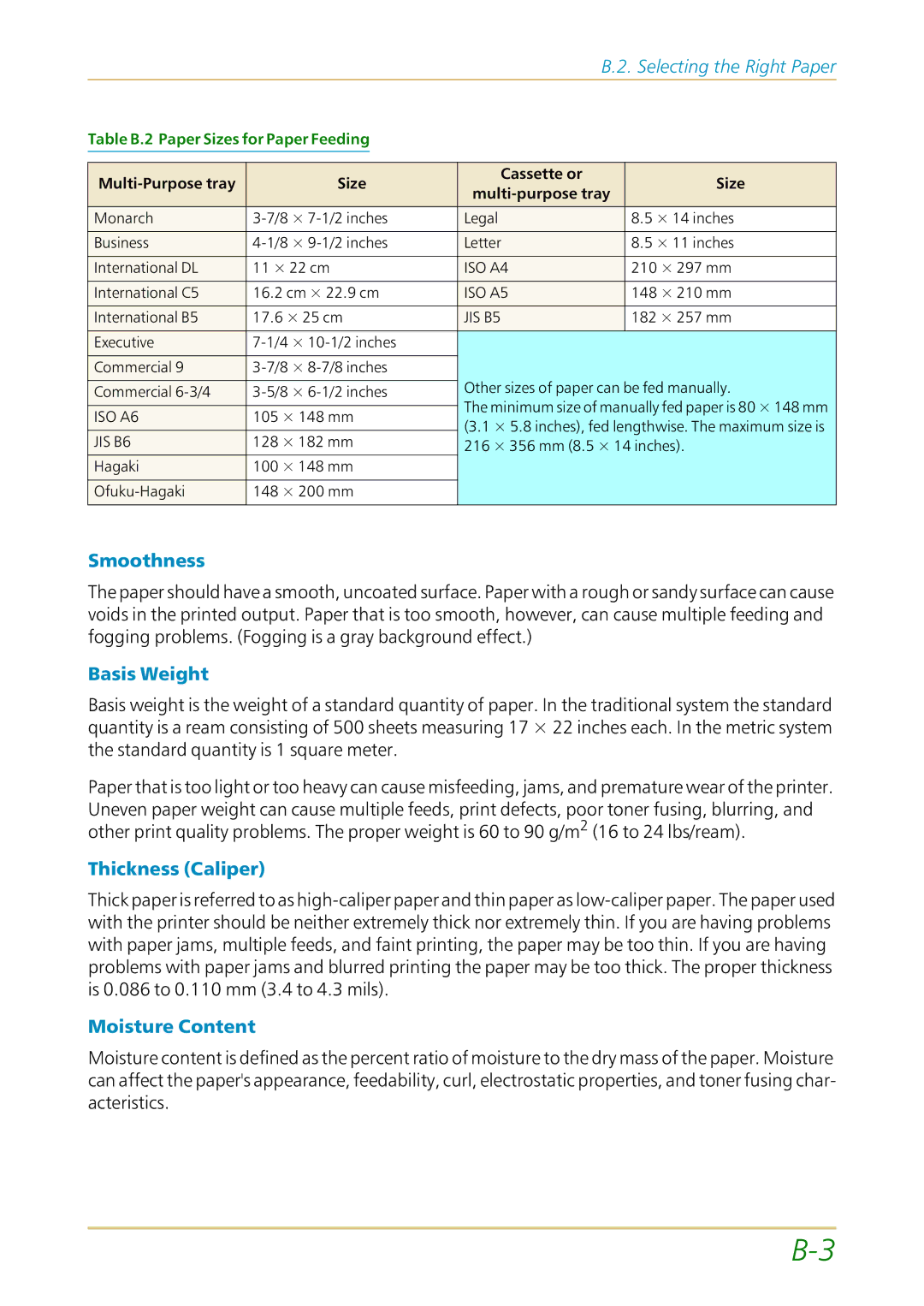|
|
|
| B.2. Selecting the Right Paper | ||
Table B.2 Paper Sizes for Paper Feeding |
|
|
| |||
|
|
|
|
|
| |
|
|
|
|
|
| |
| Size | Cassette or |
| Size | ||
| ||||||
|
|
|
| |||
Monarch | Legal |
| 8.5 × 14 inches | |||
Business | Letter |
| 8.5 × 11 inches | |||
International DL | 11 × 22 cm | ISO A4 |
| 210 × 297 mm | ||
International C5 | 16.2 cm × 22.9 cm | ISO A5 |
| 148 × 210 mm | ||
International B5 | 17.6 × 25 cm | JIS B5 |
| 182 × 257 mm | ||
Executive |
|
|
| |||
Commercial 9 |
|
|
| |||
Commercial | Other sizes of paper can be fed manually. | |||||
|
|
| The minimum size of manually fed paper is 80 × 148 mm | |||
ISO A6 | 105 × 148 mm | |||||
(3.1 × 5.8 inches), fed lengthwise. The maximum size is | ||||||
JIS B6 | 128 × 182 mm | |||||
216 × 356 mm (8.5 × 14 inches). | ||||||
Hagaki | 100 × 148 mm |
|
|
| ||
148 × 200 mm |
|
|
| |||
|
|
|
|
|
| |
Smoothness
The paper should have a smooth, uncoated surface. Paper with a rough or sandy surface can cause voids in the printed output. Paper that is too smooth, however, can cause multiple feeding and fogging problems. (Fogging is a gray background effect.)
Basis Weight
Basis weight is the weight of a standard quantity of paper. In the traditional system the standard quantity is a ream consisting of 500 sheets measuring 17 × 22 inches each. In the metric system the standard quantity is 1 square meter.
Paper that is too light or too heavy can cause misfeeding, jams, and premature wear of the printer. Uneven paper weight can cause multiple feeds, print defects, poor toner fusing, blurring, and other print quality problems. The proper weight is 60 to 90 g/m2 (16 to 24 lbs/ream).
Thickness (Caliper)
Thick paper is referred to as
Moisture Content
Moisture content is defined as the percent ratio of moisture to the dry mass of the paper. Moisture can affect the paper's appearance, feedability, curl, electrostatic properties, and toner fusing char- acteristics.
